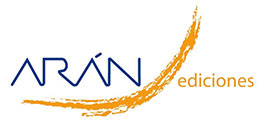Trabajo Original
Anti-diabetic effects of Inonotus obliquus extract in high fat diet combined streptozotocin-induced type 2 diabetic mice
Shanshan Chen, Yuanye Ma, Haojie Li, Hui Lang, Yongchun Li, Jie Wu, Min Zhou, Yingxin He, Yuan Liu, Erfeng Guo
 Número de descargas:
11376
Número de descargas:
11376
 Número de visitas:
4574
Número de visitas:
4574
 Citas:
2
Citas:
2
Compártelo:
Introduction: type 2 diabetes (T2DM) is a complex disease affected by lifestyle and genetic factors. Although the drugs currently used to treat T2DM have certain curative effects, they still have some adverse side effects. Therefore, it is urgent to find new effective drugs with few side effects to cure T2DM. Objective: to study the role of Inonotus obliquus (IO) in diabetic model mice. Methods: we used high-fat diet (HFD) combined with streptozocin (STZ) to establish a diabetic mouse model. Mice were divided into non-high-fat diet group (ND), diabetes model group (HFD + STZ) and IO-treated diabetes model group (IO). The mice in the IO group were orally treated with IO (150 mg/kg) at 10 ml/kg for five weeks. Body weight, glucose level, food intake and water consumption, glucose tolerance and insulin tolerance were evaluated in all mice. The pathological sections of liver, kidney and pancreas were observed by hematoxylin-eosin staining. Results: after IO administration, the blood glucose level, water consumption, low-density lipoprotein (LDL) and triacylglycerol (TG) levels of mice decreased. Compared with the HFD + STZ group, the number of normal islet β cells increased and focal necrosis of the liver was significantly reduced in the IO administration group. Conclusions: IO reduced the levels of blood glucose, restored body weight, and enhanced insulin sensitivity along with insulin tolerance and glucose tolerance in diabetic mice. Additionally, IO also reversed HFD and STZ-induced organ injury.
Palabras Clave: Inonotus obliquus. Type 2 diabetic mice. Anti-dyslipidemia. Insulin sensitivity.
DOI: 10.1186/s12916-017-0901-x
DOI: 10.1371/journal.pmed.1003396
DOI: 10.2174/1573399814666180608074510
DOI: 10.1159/000439364
DOI: 10.3390/molecules25081987
DOI: 10.7326/M16-1860
DOI: 10.3389/fphys.2018.00850
DOI: 10.1016/bs.apha.2019.08.001
DOI: 10.1155/2013/731969
DOI: 10.1016/j.phrs.2020.104627
DOI: 10.1016/j.biopha.2019.109559
DOI: 10.3390/ijms19113634
DOI: 10.1371/journal.pone.0180476
DOI: 10.1615/IntJMedMushrooms.2019030857
DOI: 10.1016/j.biopha.2017.09.104
DOI: 10.1155/2014/841496
DOI: 10.1016/j.cjca.2017.12.005
DOI: 10.3390/ijerph18020716
DOI: 10.1159/000511002
DOI: 10.1016/j.foodres.2010.10.051
DOI: 10.1016/j.diabres.2019.03.024
DOI: 10.1152/physrev.00063.2017
DOI: 10.3390/ijms21051770
DOI: 10.1172/JCI129188
DOI: 10.31729/jnma.6278
DOI: 10.1155/2019/8507453
DOI: 10.3390/ijms22020660
DOI: 10.3390/ijms21176275
DOI: 10.1007/s11892-019-1194-6
DOI: 10.1152/ajprenal.00249.2019
DOI: 10.1038/nrendo.2017.80
DOI: 10.1016/j.jtcme.2020.08.003
DOI: 10.1016/j.biopha.2017.09.104
DOI: 10.3390/molecules23081948
DOI: 10.1371/journal.pone.0180476
Artículos Relacionados:
Trabajo Original: Effects of maternal glucose tolerance, pregnancy diet quality and neonatal insulinemia upon insulin resistance/sensitivity biomarkers in normoweight neonates
Trabajo Original: One-year effectiveness of two hypocaloric diets with different protein/ carbohydrate ratios in weight loss and insulin resistance
Trabajo Original: Variability of formulas to assess insulin sensitivity and their association with the Matsuda index
Trabajo Original: Short term low-calorie diet improves insulin sensitivity and metabolic parameters in obese women
Trabajo Original: Impacto de los ácidos grasos de la dieta sobre el perfil lipídico, la sensibilidad a la insulina y la funcionalidad de las células β pancreáticas en sujetos diabéticos tipo 2
Artículos más populares
Revisión: Inteligencia artificial generativa ChatGPT en nutrición clínica: avances y desafíos
ChatGPT y otras herramientas de inteligencia artif...
Revisión: Suplementación con micronutrientes y sus beneficios: ¿por qué y cuándo?
Introducción: los micronutrientes participan en la...
-
Licencia creative commons: Open Access bajo la licencia Creative Commons 4.0 CC BY-NC-SA
https://creativecommons.org/licenses/by-nc-sa/4.0/legalcode




